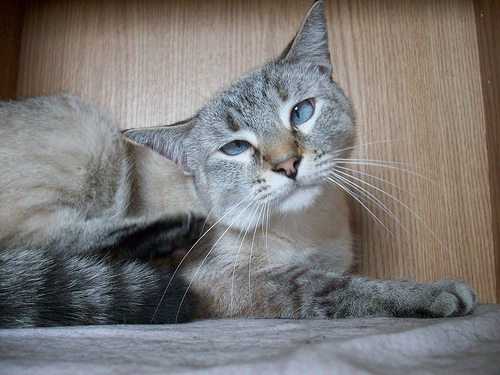Although they can survive in freezing-cold temperatures by going into a state of dormancy, fleas prefer temperatures in excess of 70 degrees Fahrenheit. When spring and summer rolls around, these blood-sucking parasites will emerge from their larvae and egg stage to begin searching for food. Unfortunately, cats are often a prime target for fleas, as the thick hair of a feline offers warmth and security. If you own one or more cats, you should get into the habit of checking them for fleas on a regular basis.
Due to their thick, long fur, its often difficult for owners to identify a flea infestation on their cat. The only exception is when a hairless species is involved, such as Bambino cat, Donskoy cat, Lykoi Cat, Peterbald, Sphynx cat, or Ukrainian Levkoy. Whether your cat is hairless or not, though, there are simple and effective ways to check your furry feline companion for fleas.
If you haven’t done so already, invest in a flea comb. Don’t just use an old comb or brush that’s laying around your home, but instead make a special trip to your local pet store to purchase a flea comb. These combs are made with fine teeth that prevent fleas from escaping. Traditional “human” combs and brushes feature teeth that are spread too far apart, which unfortunately won’t catch fleas.
After purchasing a flea comb, run it through your cat’s fur, starting from the back of their neck and working your way to their tail. Make sure you have a cup or bowl of soapy water nearby to drown any fleas you catch. Stop between passes to check your brush for fleas. If you see any fleas stuck in the teeth, pull them off and place them inside the soapy water.
Note: you must add soap to the water in order to kill the fleas; otherwise, they will escape by jumping out.
There are some cat owners can look for to better gauge whether or not their feline companion is suffering from a flea infestation. Myra Green notes that fleas prefer to attack on the area right above the tail. If you notice your cat scratching or chewing this area, they could be suffering from fleas.
“Fleas are opportunistic creatures, and they like to be on the spot right above the pet’s tail the best. If you see your pet scratching in that area, you have fleas, even if you can’t see them,” said Myra Green, practice manager at Alma Animal Clinic.

